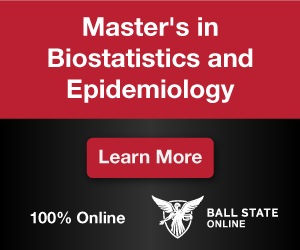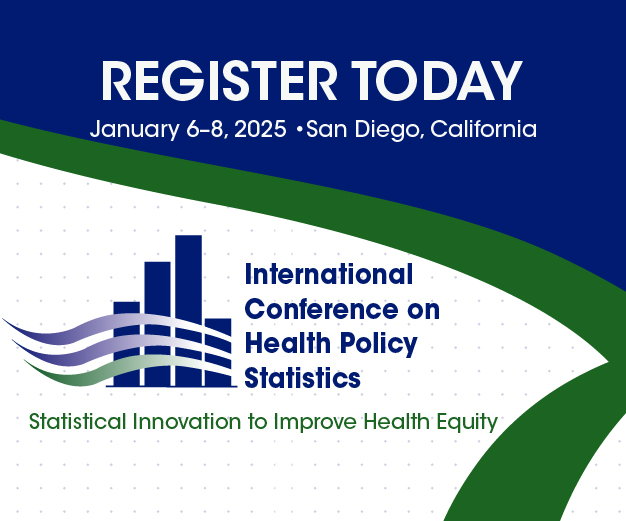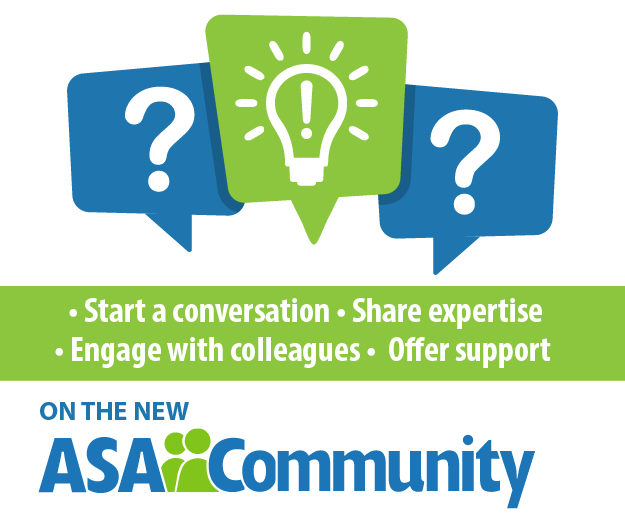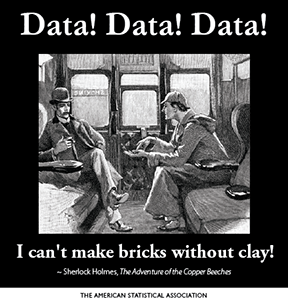Panelists
Bob Rodriguez is ASA president and senior director of statistical software R&D at SAS Institute. He leads a group of statistical software developers, who evaluate customers’ needs, keep up with advances in statistical methodology, design code and program in C, write user documentation, assist technical support in responding to customers, and give presentations to customers and professional audiences.
Christy Chuang-Stein is head of the statistical research and consulting center at Pfizer. She leads a group of senior statisticians who work as internal consultants to colleagues in research, development, and commercial organizations. Christy has been with the pharmaceutical industry for 26 years and was a vice president of the ASA between 2009 and 2011.
Nathaniel Schenker is the associate director for research and methodology at the National Center for Health Statistics (NCHS). He leads about 40 employees in NCHS’s Office of Research and Methodology while also serving as adjunct faculty at the University of Maryland. Nat has held faculty positions at the University of California, Los Angeles and served as a consultant to RAND, a mathematical statistician at the U.S. Census Bureau, and a statistician at CNA Insurance. He is a past vice president of the ASA.
Todd Behrens is senior statistical analysis manager of the Retail Model Validation Group at Capital One. He reviews and ensures the quality of the data and models used for Basel compliance in retail businesses (e.g., credit cards, mortgage, home equity, auto).
Amarjot Kaur is director in the clinical biostatistics and research decision sciences at Merck Research Labs. She manages both project work, which is directly related to drug development, and non-project work, such as internal and external activities. Previously, Amarjot was a post-doctoral fellow in the department of statistics at Penn State University and a lecturer in the Department of Statistics at Panjab University’s in India.
During the 2011 Joint Statistical Meetings, a group of leading statisticians gathered for a panel discussion, titled “The World of Applied Statistics: Where Do YOU Fit In?” Panelists responded to several questions about being applied statisticians and related the experiences that shaped their careers. Here are the highlights.
What does it mean to be an applied statistician in your department? Where are the opportunities for applied statisticians in your organization?
Bob: Within SAS research and development, I work with a group of statistical software developers who are both PhD specialists in some area of applied statistics and professional programmers. In addition, we hire statisticians with either MS or PhD degrees for the following activities:
1.Testing statistical software, which includes writing test programs and validating the results. This requires an understanding of the statistical methodology and how the software will be used by customers.
2. Developing analytical software solutions, for industry-specific problems such as fraud detection in banking or warranty analysis in manufacturing. Statisticians must have good problemsolving skills and work in teams with other developers.
3. Providing technical support for customers. Statisticians answer 10,000 inquiries per year, and 85% of the calls are answered within one minute. They must have thoughtful communication skills in addition to an understanding of the statistical methodology and how the software is used in practice.
4. Educating customers. In addition to effective teaching and presentation skills, statisticians must understand the methodology and how the software is used.
My own work frequently brings me into contact with customers who are applying statistics in research, business, and government organizations around the world. There are unprecedented career opportunities in those organizations for statisticians with the communication and computational skills to do the following:
- Adopt a strategic view by understanding the needs of the organization and how their contributions can meet these needs
- Collaborate within interdisciplinary teams
- Understand the sources, meaning, and quality of the data
- Integrate disparate sources of data and prepare them for analysis
- Formulate business problems as statistical models
- Solve problems using an ensemble of statistical modeling, data mining, forecasting, and optimization
- Analyze both structured and unstructured (textual) data
- Explain the relevance of statistical results to managers and others in the organization
Christy: Pfizer has about 225 statisticians worldwide who provide statistical support to all aspects of product development and commercialization. Support includes pre-clinical development (e.g., discovery, animal testing, biomarker development, pharmaceutical science), clinical development (phase I–IV clinical trials), and commercialization (e.g., reimbursement support, publication strategy, product defense, marketing and sales optimization). Approximately 60% of Pfizer’s statisticians are PhD’s and 40% have a master’s degree.
Developing a new pharmaceutical product is a long, risky, and expensive process. Historically, out of 5,000–10,000 compounds screened, approximately 250 entered into pre-clinical testing. Among the latter, about five made it to clinical testing and, at most, one among these five became a marketed product (Source: DiMasi et al., J of Health Economics, 2003). Recent figures show the chance that a candidate becomes a product among those entering into clinical testing has dropped to below 10%. The average cost of developing a product is estimated to be between $802 million and $1.5 billion USD, and the average duration of development is about 15 years.
Nat: NCHS documents the health status of the population, identifies health disparities, describes experiences with the health care system, monitors trends, supports biomedical and health care research, and disseminates data and information to the public for research and policymaking. It has several major data collection programs, as well as offices that focus on cross-cutting analyses and research, developing methodology, consulting, and dissemination.
Statisticians at NCHS work on design of the data collection systems, analyze data, collaborate with researchers and scientists within and outside the agency, conduct research and evaluations of methodology, ensure that data released to the public preserve privacy and confidentiality, write reports and give presentations, and participate in management and program leadership.
Todd: Opportunities for statisticians and analysts are everywhere at Capital One. They obtain, retain, and enhance products for customers. Credit card, financial services, banking, and credit risk are broad areas in which applied statisticians contribute.
Amarjot: Statisticians are the leaders in all stages of drug development. The applied statistician needs to listen and communicate effectively, receive and provide feedback, work in teams, convey complex scientific information to nonstatisticians, and of course have strong statistical knowledge.
What drew you into applied statistics? What experiences, outside of academic preparation, have shaped and enriched your career path?
Nat: I enjoy working on real problems, analyzing data, and making sure my research is relevant. I like doing theoretical work, but find focusing on applications helps keep me grounded. I also enjoy working in teams with people who have diverse skills, backgrounds, and interests, and I find figuring out how to explain statistical issues to nonstatisticians to be a useful exercise. As an applied statistician in a federal agency, I often find myself working on large-scale projects that are of interest to a lot of people, and I feel a sense of accomplishment when the projects are completed. The applied statistician sometimes needs to push the envelope with regard to methodology, via research, assumptions, and approximations, while working under time constraints and maintaining the integrity of the data. This makes for an exciting job. I have also found that professional service, especially in the ASA, has enriched my career substantially and is a good way to get to know others in the profession.
Christy: Both my parents were teachers. So early in life, I thought I would become a college professor, too. During my first post-graduate job (a joint appointment between teaching and consulting), I realized I was interested more in applying statistics to biomedical research than in teaching.
I had three internal role models who helped shape my early career in industry. All three mentors showed me the importance of professional identity and the need to give back to the profession. I also had two external mentors who were a substantial influence. They both had brilliant careers in statistics and left statistics to join other departments in their respective organizations. Their career paths made me realize statisticians could have substantial influence in nonstatistical groups within a pharma company.
Amarjot: My academic career started with strong interest in physics; however, teachers I met along the way suggested I consider statistics as a career because it was easier to get a job. I identify with statistics because it is an all-encompassing discipline and the opportunities for continuing education are appealing.
What valuable advice can you give a young applied statistician? What skill sets and personality traits are critical for success?
Bob: When you begin your job search, look for organizations in which statisticians are prized not just as problemsolvers, but as professionals. For example, are there experienced statisticians who can serve as mentors? Does the management value professional growth? Are they supportive of continuing education and active participation in a professional community such as the ASA?
Some important success factors are:
- Having effective writing skills
- Having the ability to formulate problems. In graduate school, you were taught how to solve well-defined statistical problems, but in the “world of applied statistics,” you need to be able to translate the business problem into a statistical problem.
- Working to make others in your organizational successful
- Becoming professionally active. This will bring you into contact with outstanding people who will help you grow by sharing their experiences and helping you build and update your skills as a statistician. In time, as you gain experience, you will be able to do this for others.
Christy: There are five words I would like to share: passion, courage, tenacity, curiosity, and adaptability. Also acknowledge and praise others. Often, we statisticians start a sentence with words such as “but” or “however” and we speak up when we have something to criticize. Make sure to acknowledge others when they have great ideas. When we work with nonstatisticians who emphasize the importance of statistical principles, we should praise them. We should also acknowledge those who have great ideas. Others are more apt to listen to us if we balance criticism with praise.
Other important traits include observing social etiquette and cultivating poise under stress. Managers should focus on the big picture and let go of the small stuff. This is challenging for statisticians, as we excel in technical details. Respect diversity and welcome different opinions. Say “thank you” as often as the situation calls for it. Thank you.
Todd: Know the business and know the data. Ask yourself what the value drivers are.
Nat: Be curious and keep learning. Be open to working on new problems, learning new methods, and learning the subject-matter in the field in which you work. Take advantage of opportunities for training, learn from your mistakes, and listen to senior colleagues. Work on your oral and written communication skills.
Other useful skill sets and personality traits include a solid training in statistics, tenacity, patience (e.g., to help your “clients” clarify their goals), friendliness, and ability to work with others. Character and integrity are necessary skills.
What are the pros and cons of moving from a technical role into management or leadership?
Amarjot: Moving into a management role allows me to look at the business at the macro level and have the opportunity to mentor. On the other hand, it takes me away from the data and details of analysis and leaves me with less time to work on interesting problems. There is no one role (management or individual contributor) that is better than the other. It depends on the interest of an individual and the appropriate skill set.
Todd: Seeing people develop is the best part of the job. As a manager or leader, you have the opportunity to contribute to and work on multiple problems.
Bob: In general, there are not enough statisticians in managerial or leadership roles. Often, people who excel technically are promoted into management positions and fail because they have not been adequately prepared for this responsibility. Successful managers are those who focus on helping their groups succeed. They see it as their job to remove obstacles to success and to create collegial, productive environments for their groups. Successful managers often pay the price of added stress, especially when there are conflicting goals or unclear direction from upper management. On the other hand, being a manager can be rewarding if you measure success by the accomplishments of the people you serve.
Christy: Helping others grow is a top priority for management. This requires selflessness on the individual manager’s part.
To succeed in the “world of applied statistics,” does it make a difference whether your graduate degree is from a theoretical or applied program?
Bob: A degree from an applied program can get you off to a faster start, but my experience (both personally and as a manager) has been that it doesn’t make much difference in the long run. What ultimately matters is the ability to think creatively about problems, and having solid theoretical training can be helpful for this purpose.
Todd: A degree that includes a mix of theory and applied statistics is best. Learn the theory and learn how to apply it.
I teach in a university. How can I help my students learn skills such as how to give effective presentations?
Nat: In a course I taught at UCLA, I assigned students presentations, and then asked them to comment or critique each other’s presentations. Give them team projects, as well.
Bob: Students should learn to think about their audience and how to meet their audience’s needs and interests. Students should also learn to state the problem clearly, give useful examples, and produce a concise summary. They should not let technical details dominate their talks.
How to find a mentor?
All: ASK. Put yourself out there and let others know you want their opinion. Seek a mentor through your local ASA chapter or join an ASA section.




I’m not usually a fan of panel discussions, however this one was excellent. I will long remember the words of Christy Chuang-Stein when she was asked what characteristics are most important for success as a statistician: “passion, courage, tenacity, curiosity, and adaptability.” Others echoed similar sentiments and included “soft-skills” such as the ability to organize, write well, and speak clearly. I think many in the audience were surprised to hear this at JSM, where so many presentations focus on research and knowledge, and too many talks are unorganized and poorly presented.
i would like to thank u for helping understand that course, personaly i love solving problems and achieving the desired goals makes me even happier.now i feel im about to enter in the right field thanks alot!
Iam an HND graduate of statistics. Where can i begine: to aquire profesional certificates in statistics.mail me pls.
You are indeed wonderful for your motivation.am in the right field keep it up.
This is wonderful keep it up.
You are wonderfull for your encorangement.Now i have got a career to take in university. thank you.
Thanks so much for the post.
I have professional diploma in statistics(equivalent to higher national diploma) am also getting through with my degree also in statistics.
Can you pls tell me the usefulness of statiscians in independent national electoral commision (INEC) and possibly their role.
I only know it’s a place where man of integrity is highly needed someone that can’t be bought.
I know I have this grace and I want to use it for my country thanks
POPOOLA
234-7031808548
I am a Pharmacist. But I love data analysis especially as regards drugs production. I am confused on choosing statistics in my masters degree. Please I need advice on the benefit of stat. In my profession.
its such encouraging..am proud to be in this field
I am currently taking an intro statistics class for my nursing degree. I often think to myself, “why would anyone want to be a statician? it seems like it would be so boring.” This post helped me to see that people are passionate about their careers in statistics and why they are. It seems like it would be a very rewarding and exciting career, for the right person of course. I think as a future nurse, being involved in statistics to help create new health models would be something I would look into.